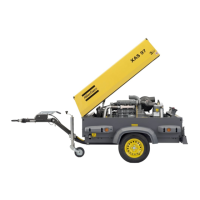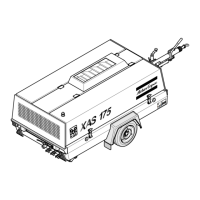36
XAVS 136 Dd - XAHS 146 Dd - XATS 156 Dd - XA(S) 186 Dd - XAHS 186 Dd
6. PROBLEM SOLVING
It is assumed that the engine is in good condition and that there is
adequate fuel flow to the filter and injection equipment.
Make sure that the wires are not damaged and that they are clamped
tight to their terminals.
6.1 ALTERNATOR PRECAUTIONS
1. Never reverse the polarity of the battery or the alternator.
2. Never break any alternator or battery connections while the engine
is running.
3. When recharging the battery, disconnect it from the alternator.
Before using booster cables to start the engine, be sure of the
polarity and connect the batteries correctly.
4. Never operate the engine without the main or voltage sensing
cables connected in the circuit.
An electrical fault must be traced by an electrician.
For position of dip switches refer to section 2.8.1 to
2.8.2 Circuit Diagrams.
Problem Possible faults Corrective actions
1. Starter motor does not crank
engine after switching
startbutton (S) to ” ”.
a. Low battery output. a. Check electrolyte level and charge battery.
If no cells are shorted and battery is
discharged, trace cause and correct.
2. Starter motor cranks engine
when switching start button
(S) to ” ”, but engine
does not fire.
a. Low battery output. a. See corrective action 1.
3. Engine fires, but engine
stops when releasing start
button (S).
a. Alternator drive belt broken or slipping.
b. Alternator/regulator defective.
a. Check and correct if necessary.
b. Have assembly repaired.
4. Hourmeter (P1) does not
count running time.
a. Hourmeter (P1) defective. a. Replace.

